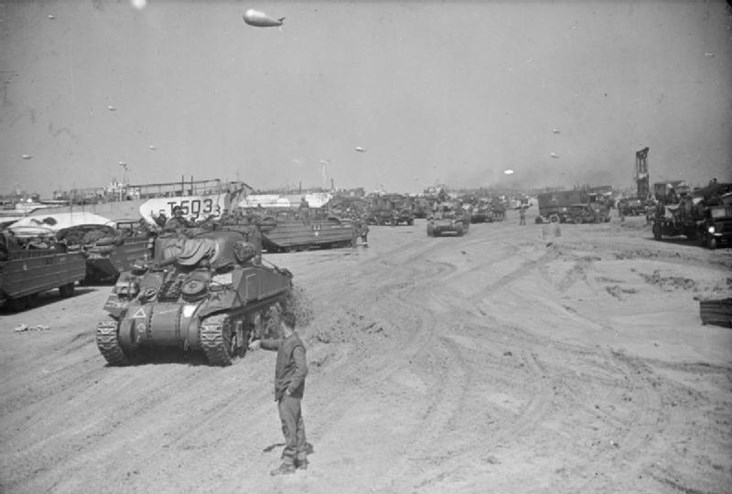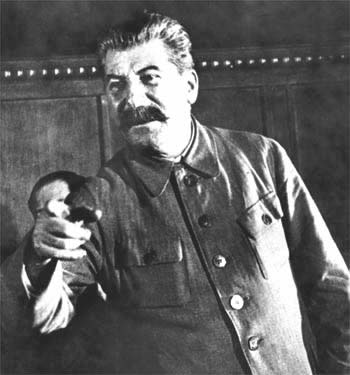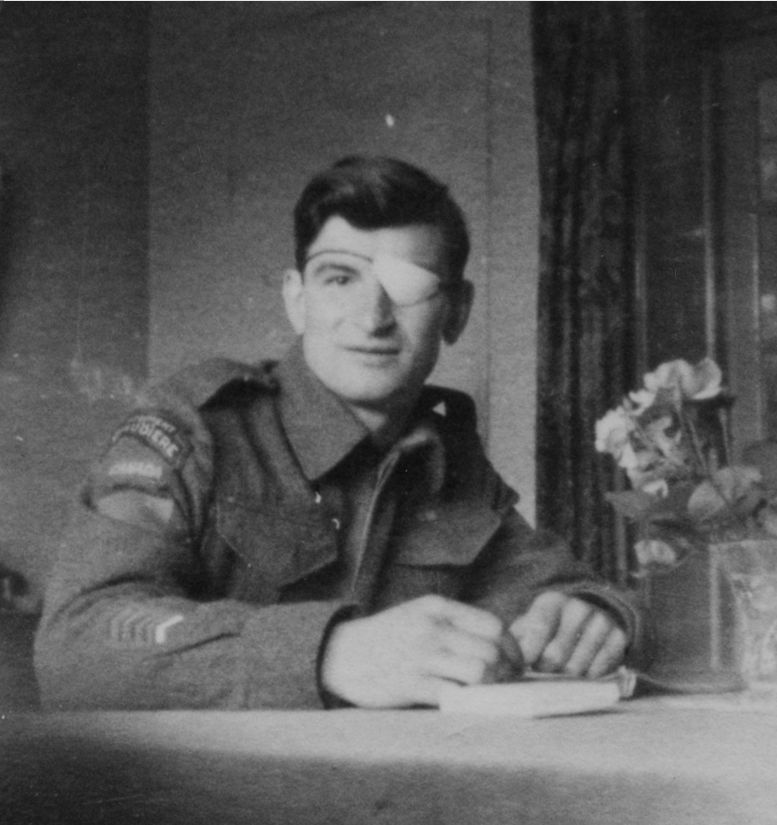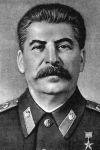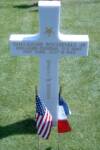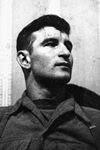Miracles of Planning Behind the Great Invasion
The War Illustrated, Volume 8, No. 184, Page 110, July 7, 1944.
No less renowned a warrior than Marshal Stalin has paid tribute to the brilliant success of our assault on Western Europe. “In the whole history of war”, he said, “there was not been any such undertaking, so broad in conception, so grandiose in scale and so masterly in execution”. The military organization that helped to make this triumph possible is briefly outlined below.
Trains cancelled and trains late: these were annoyances suffered in varying mood by the civilian on the eve of D-Day – and promptly forgotten when, on the morning of June 6, 1944, the world thrilled to the announcement that a gigantic armada had crossed the Channel and the siege of North-Western Europe had commenced.
In vast camps and remote villages all over Britain extreme activity, surpassing anything that had gone before, had reigned whilst we finally gathered our assault forces and gave them the strength to do that which they are now accomplishing so magnificently. Roads echoed to the thunder of almost endless convoys as the appointed day approached; and on the railways fell an especially heavy burden – the transportation in two months of 230,000 soldiers criss-cross over the face of Britain to the several invasion marshalling centres, together with 12,000 tons of baggage.
In those eight weeks close on 2,000 special trains ran non-stop to ports whence the invasion was to be launched. Tanks and other war vehicles to the number of 7,000 went by rail. For heavy tanks special flat-bottomed wagons had had to be constructed, to the order of the War Office. To all this was added other stupendous traffic which cannot be specified here – yet complete order reigned where might have been expected chaos. The result was that every ship that in due course sailed across the Channel was loaded up with just that cargo for which it had been earmarked. Thus brilliantly shone just one of the many and almost bewilderingly varied facets of the scheme involving naval, land and air forces in a combined operation on the smooth running of which the whole fate of the gigantic venture hung as on a thread.
The fact that Allies forces also were involved added to complications which, long before D-Day, had of sheer necessity to be smoothed into an indivisible and unconquerable power to shatter as speedily as possible the resistance of the enemy.
As far back as the closing days of 1941, when we were slowly recovering from the disastrous Dunkirk period of the previous year, this problem of landing an army in full strength on the mainland of Europe was engaging the keenest brains. But operations in the Mediterranean area had then to be give priority.
During that period the pattern of our ultimate plans was emerging. From Combined operations at St. Nazaire in March 1942, and in August at Dieppe, much was learned. The lay-out of the supposedly formidable West Wall was revealing its secrets to the British Intelligence Staffs. Invasion maps, covering all parts of Western Europe where operations might eventually take place, were prepared by the million; in this work practically every firm in Britain whose plant was capable of, or could be adapted to, the printing of maps was employed by the Survey Department of the War Office, the greatest precautions meanwhile being taken against leakage of any scrap of information likely to be of use to the enemy.
Operations against Sicily and the Italian mainland followed the Casablanca Conference of early 1943. At the end of March of that year the 1944 “Second Front” preparations entered on a new and vigorous phase. An Anglo-American staff representing all three Services (Army, Navy and Air) made an accounting of all resources that would be available early in 1944, and compiled plans for the invasion.
A general scheme was submitted to British and U.S. Chiefs of Staff, and finally approved by the Prime Minister and Mr. Roosevelt at the Quebec Conference in August 1943. Administrative preparations then went forward apace, special training of the forces was speeded up, and complete co-ordination by air and naval forces was arranged to the satisfaction of General Eisenhower, who assumed the appointment of Supreme Commander in January 1944. Upon him devolved responsibility for decision as to the actual date of the assault.
Supply, provisioning and transport all had to be fitted into the master plan. Here entered administrative problems of the very first magnitude – the concentration of large troops formations in areas near to points of embarkation, with the minimum dislocation of the civilian population, to be followed by the movement of the concentrated troops to marshalling areas, where they would be divided into assault troops, first reinforcements and follow-ups and then split into unit parties and craft leads for embarkation. Coastal shipping for the cross-Channel transport of troops had to be arranged for, without “robbing” the country unduly of the wherewithal to obtain essential supplies for home and factory use. Loading berths had to be decided upon, and special “hards” constructed to add to berthing facilities. The movement of requisitioned coastal ships to selected ports and points of loading provided many a headache.
Every planned movement and route, by land and sea, had to be according to exact time-table. For each beach-head secured, ships were to be loaded with a mixed cargo: food, ammunition, signals equipment, engineering and ordnance stores, water and medical supplies, each in carefully calculated quantity per ship. Furthermore, responsibility for transporting R.A.F. Materials needed at airfields captured or constructed devolved upon the Army.
Among the major considerations which had to be settled well in advance was that concerning types of invasion vehicles. The D.U.K.W.s (amphibious lorries), which had served so well in the invasions of Sicily and of the Italian mainland, required for their manning – for this greater occasion – large numbers of water-trained R.A.S.C. Personnel; and for the operating of fast launches in connexion with beach and port unloading, special motor-boat companies had to be organized. For all lorry drivers instruction in manoeuvring through deep water from the assault craft was necessary.
One simple type of craft from which troops can wade ashore suffices to transport an infantry battalion. But their vehicles, and tanks, and artillery, necessitate the employment of manifold types of craft. These must all be at the right spot at the right moment, and in sufficient numbers. One problem in connexion with the landing of vehicles on the French beaches worried the Directorate of Mechanical Engineering, until a system of waterproofing was evolved. This not only protects vehicles against corrosive effects of sea water, but enables the engines to function in depth of water to which the craft may be not ordinarily adapted. That our tanks drove on the Normandy shore through six feet of water is due to one of the greatest “rush” jobs of this war.
Chiefly, this task of waterproofing the invasion vehicles fell to the Royal Electrical and Mechanical Engineers. Enough steel plate was used in the process to lay an armoured road from London to Berlin, and it was produced by the round-the-clock efforts of our combined steel sheet-rolling industries. Army and civilian lorries to the number of 250 were engaged for eight weeks in transporting the material from the 280 factories handling it, to R.A.O.C. depots; 500,000 components the R.A.O.C. received and assembled and then issued to some 5,000 different depots for fitting.
Hand-in-glove with all this went medical preparations, and far-seeing arrangements for the transport of the sick and the wounded from the beach-heads to Britain, either by sea or by air. Pay day on the beaches passed without a hitch, thanks to the Paymaster-General's forethought; and within a day or two of the landing letters were being collected for delivery home – and letters from home being received by “the boys” sharing the brilliant triumphs of those early June days.
Index
Previous article
With the 'Suicide Squads' Who Cleared the Way
An 80-mile breach in the vaunted West Wall on the Normandy coast lies at the back of our Armies in France. It can now be revealed how, in fantastic circumstances, British scientists stole the beach
Next article
Allied Tanks and Equipment Pour into Normandy
Allied Tanks and Equipment Pour into Normandy Shepherded across the English Channel by the Allied Navies under Admiral Sir Bertram Ramsay, tanks and equipment in ever-increasing quantities lan


